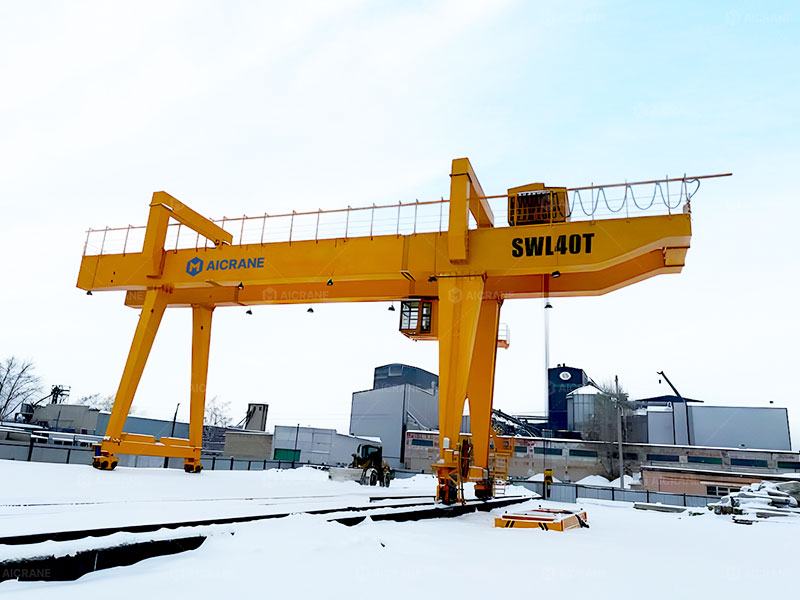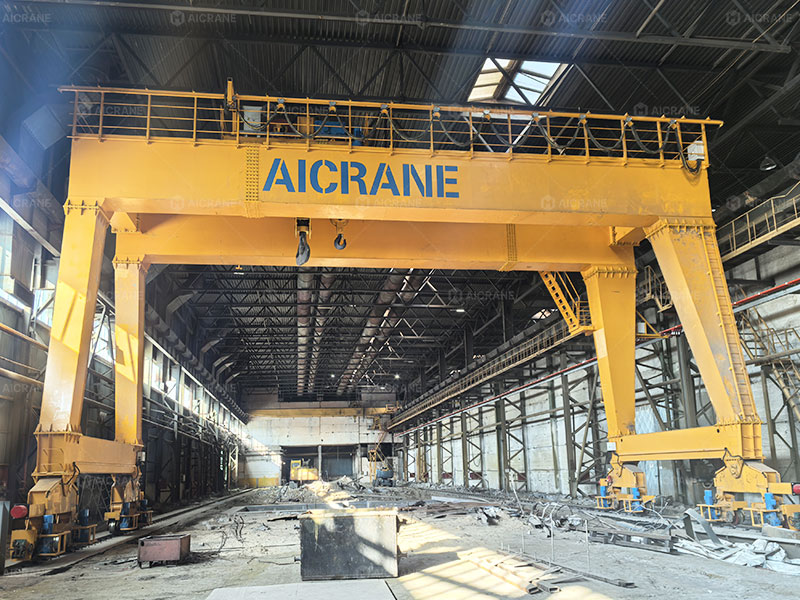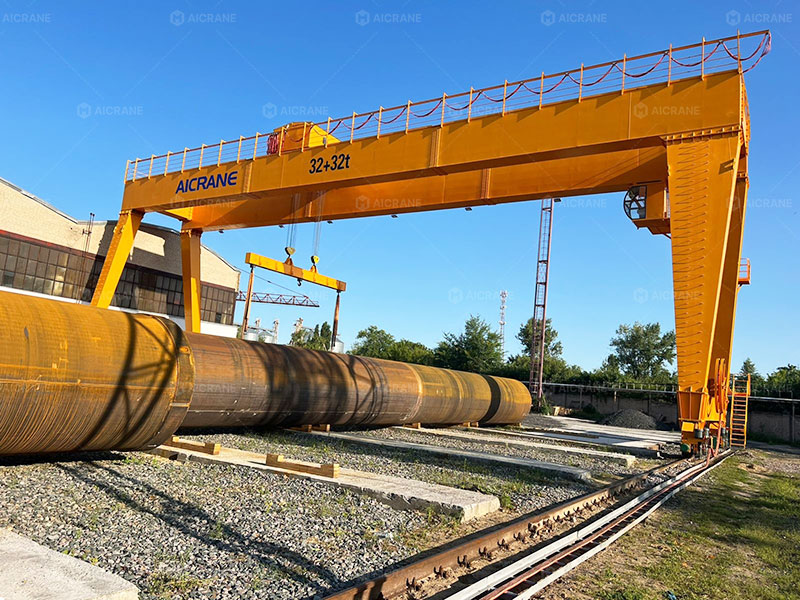Gantry cranes are an essential component in modern industrial and construction operations. They provide efficient solutions for lifting and transporting heavy loads in manufacturing plants, shipyards, construction sites, and logistics hubs. However, not all gantry cranes are built the same. Depending on the operational environment, gantry cranes are designed specifically for either indoor or outdoor use. Understanding the differences in indoor vs. outdoor gantry crane structures is crucial for choosing the right crane for your business and ensuring safe, efficient operations.

Overview of Gantry Cranes
A gantry crane is a type of overhead crane that consists of a hoist supported by a framework spanning across a workspace. Unlike bridge cranes fixed to a building structure, gantry cranes are usually supported by legs that travel on ground-level rails or wheels. Gantry cranes come in various sizes and configurations, from light-duty models for small workshops to heavy duty gantry cranes capable of lifting hundreds of tons.
While their basic components – girder, legs, hoist, and trolley – are similar, the design requirements for indoor and outdoor gantry cranes diverge due to the differences in operating conditions.
Indoor Gantry Cranes
Indoor gantry cranes are designed to operate inside factories, warehouses, and workshops. Their environment is generally controlled, with minimal exposure to harsh weather, temperature extremes, and dust or debris.

Structural Design
The structural design of indoor gantry cranes focuses on space efficiency and load capacity. They typically feature lighter frames compared to outdoor cranes, as they do not need to withstand wind or heavy environmental stresses. Steel beams used in indoor gantry cranes can be optimized for strength-to-weight ratio, making them cost-effective and easier to install.
Span and Height
Indoor gantry cranes often have a smaller span and lifting height, dictated by the dimensions of the facility. Many indoor cranes are designed to maximize coverage of the workspace while fitting within the building’s structural limitations. Clearance height is critical, as the crane must navigate beneath ceilings, lighting fixtures, and other overhead equipment.
Mobility
Mobility in indoor cranes can vary. Some models are fixed on rails installed on the factory floor, while others are mounted on wheels to allow repositioning within the workspace. The ground surface indoors is usually flat and smooth, reducing stress on the crane structure and enabling lighter leg construction.
Environmental Considerations
Indoor cranes are protected from rain, wind, and UV radiation, allowing the use of standard steel with minimal protective coatings. Noise control and vibration absorption may also be more critical in indoor settings to maintain a comfortable working environment.
Typical Applications
Indoor gantry cranes are common in assembly lines, warehouses, and workshops. They are used for lifting heavy components, moving raw materials, and assisting in the manufacturing process. Their ability to operate in confined spaces and maintain precise control makes them ideal for detailed industrial tasks.
Outdoor Gantry Cranes
Outdoor gantry cranes, often referred to as full gantry cranes or portal cranes, are designed to operate in open environments such as shipyards, container yards, construction sites, and steel fabrication facilities. They are exposed to varying weather conditions and must be robust enough to maintain stability and safety in harsher environments.

Structural Design
The structural requirements for outdoor gantry cranes are more stringent. They are built with reinforced steel and often have additional bracing to resist wind, snow, and seismic forces. Outdoor gantry cranes may feature taller legs to accommodate ground irregularities and ensure adequate clearance for large vehicles or containers. The overall frame is typically heavier and more rigid than indoor models.
Span and Height
Outdoor gantry cranes often have much larger spans and higher lifting capacities than their indoor counterparts. For example, container handling cranes in ports can have spans exceeding 50 meters and lifting heights above 40 meters to stack containers. The crane’s height and span are designed to optimize efficiency in moving oversized loads while maintaining stability against wind forces.
Mobility
Outdoor cranes require robust mobility systems. They often travel on heavy-duty rails embedded in concrete or equipped with large rubber tires for rubber-tyred gantry cranes (RTG cranes). This mobility allows them to cover large areas, such as container yards, and adjust positions to load and unload materials efficiently. The outdoor surface must support the crane’s weight, and the structure is designed to compensate for uneven terrain.
Environmental Considerations
Outdoor gantry cranes are exposed to rain, sunlight, snow, and wind, which directly affects material selection and protective coatings. Steel is often galvanized or painted with weather-resistant coatings to prevent corrosion. Special attention is paid to the crane’s electrical and mechanical components, ensuring they are weatherproof and capable of operating in extreme temperatures.
Safety Features
Safety is a major concern for outdoor cranes due to environmental hazards. Many outdoor cranes incorporate wind sensors, anti-collision devices, and reinforced foundations. The design must account for wind loading, and operations may be restricted during severe weather conditions.
Typical Applications
Outdoor gantry cranes are widely used in shipyards for handling vessels, ports for container handling, and construction sites for moving heavy prefabricated materials. Their large spans, high lifting capacities, and mobility make them suitable for heavy-duty, large-scale operations.
Key Differences Between Indoor and Outdoor Gantry Cranes
| Feature | Indoor Gantry Cranes | Outdoor Gantry Cranes |
|---|---|---|
| Structure | Lighter, optimized for indoor loads | Heavier, reinforced for environmental stress |
| Span & Height | Limited by building dimensions | Larger spans and higher lifts |
| Mobility | Rails or wheels on smooth floors | Heavy-duty rails or rubber tires for rough terrain |
| Environmental Protection | Minimal coating needed | Weatherproof coatings, corrosion resistance |
| Safety Considerations | Focus on indoor hazards | Wind loading, extreme weather, seismic resistance |
| Applications | Workshops, warehouses, assembly lines | Shipyards, ports, outdoor construction sites |
Choosing the Right Gantry Crane
When selecting a gantry crane, the first consideration is the operating environment. Indoor cranes are best suited for controlled environments with limited exposure to the elements, allowing for more lightweight, cost-effective designs. Outdoor cranes, in contrast, are engineered for durability and stability under extreme conditions and large loads.
Other factors to consider include:
-
Load Capacity: Heavy-duty outdoor applications typically require higher load capacities.
-
Frequency of Use: Continuous operations may benefit from reinforced outdoor cranes even in semi-sheltered areas.
-
Space Constraints: Indoor cranes must fit within the building structure, while outdoor cranes require adequate ground support.
-
Maintenance: Outdoor cranes require more frequent inspection for corrosion and wear due to environmental exposure.
Conclusion
The distinction between indoor and outdoor gantry crane structures is significant. Indoor gantry cranes prioritize space efficiency, lightweight construction, and precise operation within controlled environments. Outdoor gantry cranes focus on robustness, environmental protection, and high mobility for large-scale operations. By understanding these differences, businesses can select the right crane for their specific needs, ensuring operational efficiency, safety, and longevity.
Investing in the correct gantry crane – tailored to either indoor or outdoor applications – can have a profound impact on productivity and safety. While the upfront costs may differ, selecting a crane designed for its operational environment reduces maintenance, enhances reliability, and improves the overall efficiency of industrial operations.